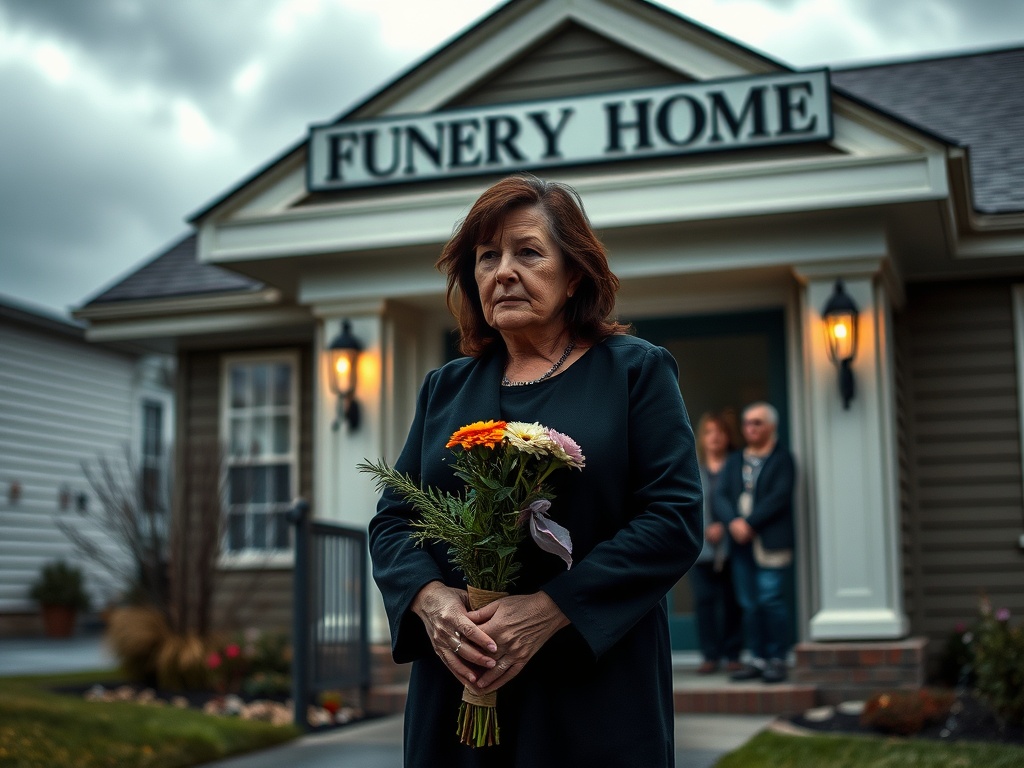Heartbreaking Experience: Mother Fired on the Day of Her Stillborn Daughter’s Funeral

A mother has recounted the devastating moment she was dismissed from her job via text message on the very day of her stillborn daughter’s funeral. Lou Temlett, now 47, was employed as a project manager for a national company and was still within her probationary period when she received the shocking message informing her that her employment was terminated with immediate effect. She shares her harrowing story with The i Paper, highlighting alarming new research from the campaign group Pregnant Then Screwed, in collaboration with Women in Data, which reveals a significant rise in the number of women being pushed out of their jobs due to pregnancy or maternity leave.
The findings indicate that approximately 74,000 women each year lose their jobs after becoming pregnant or while on maternity leave, marking a staggering 37 percent increase from the 54,000 reported in 2016.
Ms. Temlett, a resident of Bath and a single mother to a 14-year-old and a seven-year-old, described her ordeal during her pregnancy. “I was pregnant and had undergone several scans, yet they couldn’t see crucial parts of my baby’s heart,” she explained. After undergoing genetic testing, she faced a torturous three-week wait for the results, during which she received a life-altering call from her doctor while she was at work.
When the devastating news came that her baby daughter had severe health issues that might prevent her from surviving the pregnancy, Ms. Temlett was overwhelmed with grief. “I was in tears, and my manager had to escort me through the open-plan office while everyone could see how distraught I was,” she recalled. Ultimately, she made the heart-wrenching decision to terminate the pregnancy at 26 weeks, leading to the birth of her stillborn daughter after a grueling 14-hour labor.
“Making that decision was incredibly emotional; I felt immense guilt and sorrow. But a week after the stillbirth, I returned to work, and the funeral took place about two and a half weeks later. I took the day off to attend,” she said.
On the morning of her daughter’s funeral, Ms. Temlett was stunned to receive a text message notifying her of her immediate termination due to poor performance. “It was horrific. I was still in my probation period, and they gave me immediate notice. I had been fulfilling my responsibilities, and there had been no prior discussions about my performance. The text was completely unexpected, especially on such a painful day,” she said.
She firmly believes that her termination was motivated by her pregnancy and the company’s reluctance to employ someone who might need maternity leave again in a senior role. Ms. Temlett’s experience with her stillborn daughter in 2012 ultimately contributed to the dissolution of her marriage. Although she later welcomed her now seven-year-old child with a new partner, she is currently a single mother to both children and is self-employed.
“It’s appalling how many women lose their jobs during pregnancy or while on maternity leave,” she remarked.
Similarly, Kate Miller, 32, from Newcastle, shared her experience of being told about her redundancy via a Zoom call just two weeks after giving birth to her son, Luca, who is now 10 months old. Ms. Miller, who held the position of sales director at an advertising firm, was attending a hospital appointment when she received a WhatsApp message from HR requesting her presence on a Zoom call.
“I didn’t see the message until I got home. When I replied, I was asked to join a call the next morning. During that call, the CEO read from a script to inform me that they were shutting down the UK side of the business,” she explained. “It was completely unexpected, and I felt emotional and shocked as I hadn’t prepared for such news at all.”
To make matters worse, a month later, after receiving her severance, Ms. Miller discovered that the company was advertising for the same role she had occupied, with the identical job description. “I genuinely believe I lost my job directly because I had a baby. When they hired me, I was single, and shortly thereafter, I became a mother. It’s just terrible, and it leaves me speechless that women can be treated so poorly during such a vulnerable period after childbirth,” she added.
The survey, which included responses from 35,800 parents, revealed that 12 percent of women reported being dismissed, constructively dismissed, or made redundant while pregnant, on maternity leave, or within a year of returning to work. The report estimates that this could result in as many as 74,000 women being forced out of their jobs annually.
Half of the pregnant women, those on maternity leave, and those returning from maternity leave reported having negative experiences at work; as a result, one in five felt compelled to quit their jobs. Furthermore, a third of women indicated they were sidelined or demoted during their pregnancy, maternity leave, or upon their return, yet only two percent of those who encountered discrimination pursued a claim in tribunal.
Joeli Brearley, founder of Pregnant Then Screwed, expressed her concern, stating, “We have long suspected that conditions are worsening, not improving. Our free advice line is inundated with calls, and the demand has reached a level we can barely manage. To learn that 74,000 mothers each year are being pushed out of their jobs for the simple act of becoming a parent is both unsurprising and heartbreaking.”
Taisiya Merkulova of Women In Data emphasized the need for collective action, stating, “We must address the gender gap, eliminate the obstacles women face in achieving equal opportunities in the workplace, and alleviate the burden of the unspoken ‘tax’ on mothers stemming from the additional unpaid labor they undertake as caregivers at home.”
If you need support, please visit maternityaction.org.uk or call the Sands helpline at 0808 164 3332.
